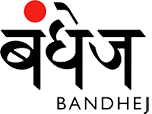
HANDCRAFTED, Sustainable Fashion
Currency

Celebrating the Fabric of Freedom
 |
Mahatma Gandhi saw the revival of local village economies as the key to India's spiritual and economic regeneration and he envisioned homespun khadi (coarse, handspun and handwoven cotton, worn by the common man) as the catalyst for India’s economic independence. Khadi became the fabric of the freedom struggle and the charkha (spinning wheel) became the symbol of India’s Independence Movement. |
“The message of the spinning wheel was much wider than its circumference”. Gandhiji saw Khadi as a tool to reviving the village economy but he never suggested “that those, who are more lucratively employed should give up their employment and prefer spinning”. He believed, " No nation having its masses unemployed or under-employed can hope to progress”. The weaker sections, who are at the bottom of the pyramid, need to be uplifted; create sustained work opportunities that would help improve their economic condition.
 |
 |
 |
 |
 |
 |
 |
 |
 |
Gandhiji chose the word khadi from khaddar, a coarse cotton fabric worn by the common man. The charm of khadi is in its artistry, the irregularity of the yarn, creating a unique tactile fabric. This handspun and handwoven fabric is comfortable to wear, the low twisted yarn allows the fabric to breathe and absorb and it becomes softer with every wash. Khadi, the fabric of freedom continues to spin incomes for the rural poor while reminding the country of its legacy of sustainable living and self-reliance. There is an urgent need for product development to create a new identity, supported with appropriate awareness campaign to promote the value of hand spun and handwoven fabrics that are good for the skin as well as the environment. This precious fabric from the past has the potential of becoming the fabric of the future. The spirit of khadi needs to be revived as it is an eco-friendly means of production with a potential of creating dignified livelihoods for millions, without huge investment.
Gandhiji’s ideas about non-violence, tolerance, nayi taleem, developing the village economy and khadi continue to be most relevant today.










